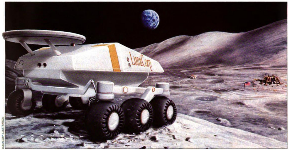LunaCorp
Created: 2020-05-09
Updated: 2025-09-06
Company - LunaCorp
- Founded
- Country
- 1989
- USA
- Funding
- Yes, ?
Product/Service
- Classification
- Surface Spacecraft
- Category
- Commercial Rover
Advertising
- Fields
- Moon
- Status
- Dormant
- First launch
- Dormant
RadioShack Jumps Into the Space Game by Sponsoring LunaCorp
The RadioShack Father's Day Commercial
Sources
Most sources should be linked in the texts and headings as revealed by mouse-over, but here are they listed for visibility.
News, Research, Projects and Patents
| Title | Type | Date | Summary |
|---|---|---|---|
| DOING BUSINESS IN SPACE: THIS ISN'T YOUR FATHER'S (OR MOTHER'S) SPACE PROGRAM ANYMORE | Publication | 2001-01-01 |











































.jpg)


















